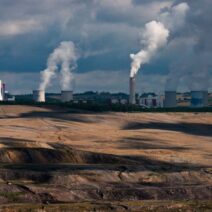As the world grapples with the increasingly catastrophic effects of climate change, few phenomena illustrate the dire impact of global warming more vividly than extreme storms. Typhoons, particularly those like Hagibis, exemplify the ferocity of nature fueled by anthropogenic climate changes. Understanding the intricate relationship between these powerful storms and global warming is crucial for fostering awareness and mobilizing action.
Typhoons, classified under the same umbrella as hurricanes and cyclones, are tropical cyclones that form in the Northwestern Pacific Ocean. Their potency derives from warm ocean waters, which serve as fuel for their development and intensification. As global temperatures continue to rise, primarily due to increasing greenhouse gas emissions, the dynamics of typhoon formation change dramatically. This warming trend leads to higher sea surface temperatures, creating an environment ripe for the formation of more potent storms.
The relationship between global warming and extreme storms is multifaceted. It encompasses several interconnected mechanisms, including increased atmospheric moisture, altered weather patterns, and shifts in oceanic currents. Each of these factors contributes to the enhanced intensity and frequency of storms like Hagibis, which wreak havoc on the regions they impact.
One significant factor is the increased moisture in the atmosphere. Warmer air holds more water vapor, which can lead to more intense rainfall during storm events. According to established scientific principles, for every 1°C increase in temperature, the air’s capacity to retain moisture increases by approximately 7%. This translates to torrential downpours during typhoons, leading to severe flooding and landslides—a brutal reality witnessed during Hagibis. The inundation of urban areas and agricultural lands can devastate local economies and infrastructure, raising urgent questions about resilience and preparedness.
Another critical linkage lies within altered weather patterns. Climate change does not simply warm the planet uniformly; it disrupts traditional weather systems and jet streams, leading to prolonged periods of extreme weather. For instance, typhoons can stall over regions due to blocked weather patterns, exacerbating their impacts. Hagibis was particularly notorious for this phenomenon, as its slow movement allowed for prolonged violence against already vulnerable locales, amplifying its destructive capacity. Areas were subjected to surging winds and continuous rain, groaning under the dual forces of nature unleashed.
Oceanic currents are another pivotal player in the narrative of global warming’s interaction with typhoons. The thermohaline circulation, often described as the ocean’s conveyor belt, plays a significant role in regulating climate by distributing heat around the planet. As global temperatures rise, alterations in these currents can lead to shifts in where and how storms form. The anomalous warming of specific oceanic regions can create an ideal breeding ground for typhoons, increasing their likelihood and creating a feedback loop of destruction.
Moreover, the impact of extreme storms like Hagibis extends beyond immediate environmental damage. The socio-economic ramifications are profound. Displacement of communities, destruction of infrastructure, and loss of livelihoods are haunting echoes of such catastrophic events. The repercussions are felt long after the storm clouds have cleared, highlighting the interconnectivity of natural systems and human life. Long-term recovery efforts can often be hampered by the frequency of these severe weather events, locking communities in a cycle of vulnerability.
In addition, the psychological toll on affected populations cannot be overlooked. Witnessing the ferocity of storms, the resultant destruction, and the loss of loved ones can leave indelible scars. Mental health concerns often accompany physical dislocation, emphasizing the need for comprehensive disaster response frameworks that address both immediate and lingering effects. This intersecting impact underscores the urgency of addressing climate change head-on, advocating for policies aimed at carbon reduction, sustainable energy, and prepared communities.
Adaptation and mitigation strategies are also essential components of the discourse surrounding extreme storms and climate change. Strengthening infrastructure through resilient design, investing in early warning systems, and developing community resilience programs are steps that can help mitigate the risks posed by towering typhoons. Incorporating climate change projections into urban planning ensures that cities are better prepared for the storms of the future.
Public awareness and education about the nexus between global warming and extreme weather events are indispensable. Understanding the science helps galvanize communities and drive support for necessary policy changes. Campaigns aimed at promoting actionable change, from reducing carbon footprints to advocating for sustainable practices, are the levers by which society can begin to address this monumental challenge.
Climate change is not a distant threat; it is our present reality. Typhoons like Hagibis, with their scathing ferocity, serve as poignant reminders of the urgency to address this issue. The increasing frequency and intensity of such storms herald a future that is fraught with peril if left unchecked. Mobilizing collective action, fostering a culture of preparedness, and promoting sustainable practices are paramount in reshaping the dialogue surrounding climate change. In this critical juncture, we must recognize that combating global warming is not merely an environmental concern but an existential one that dictates the future of humanity.






